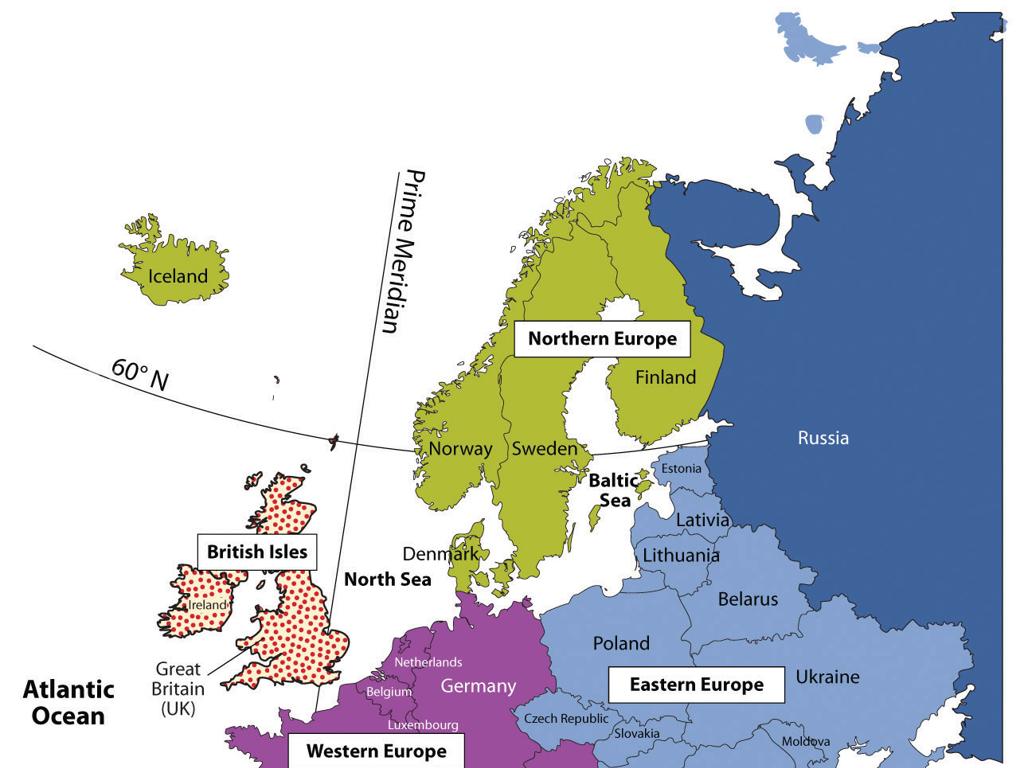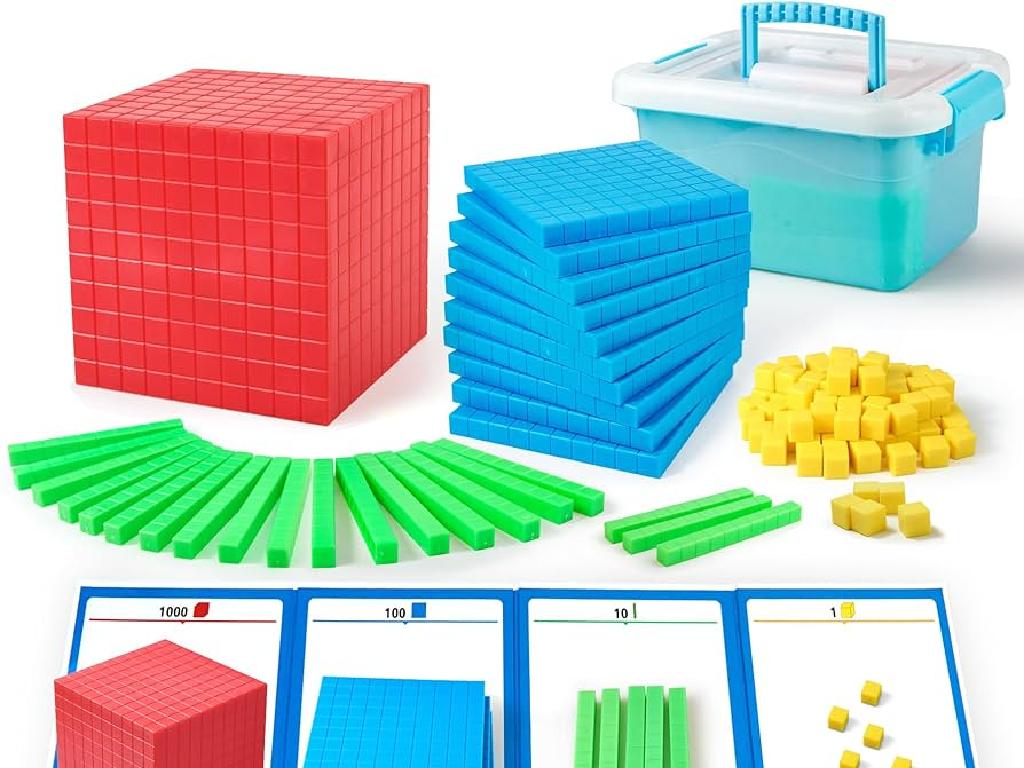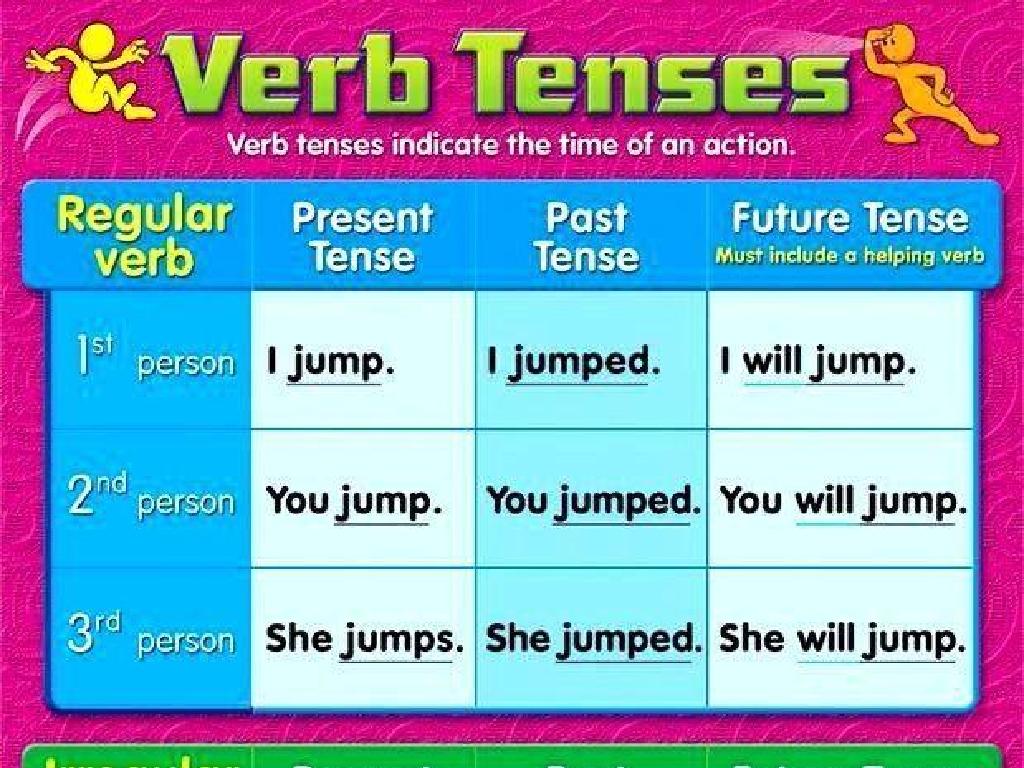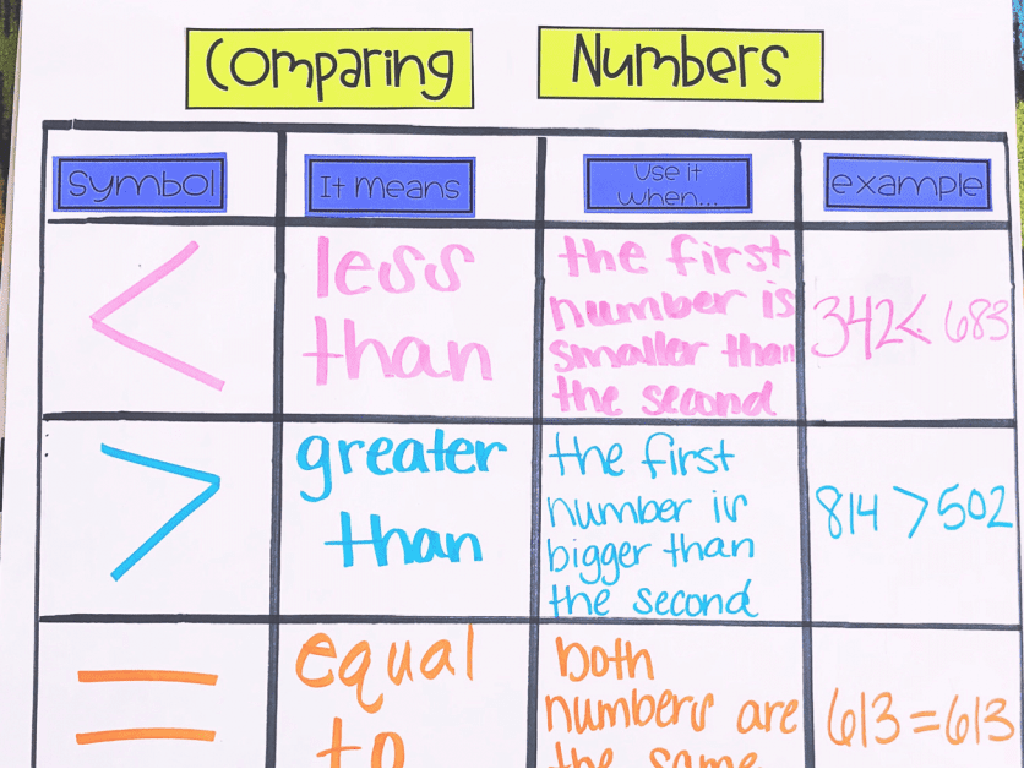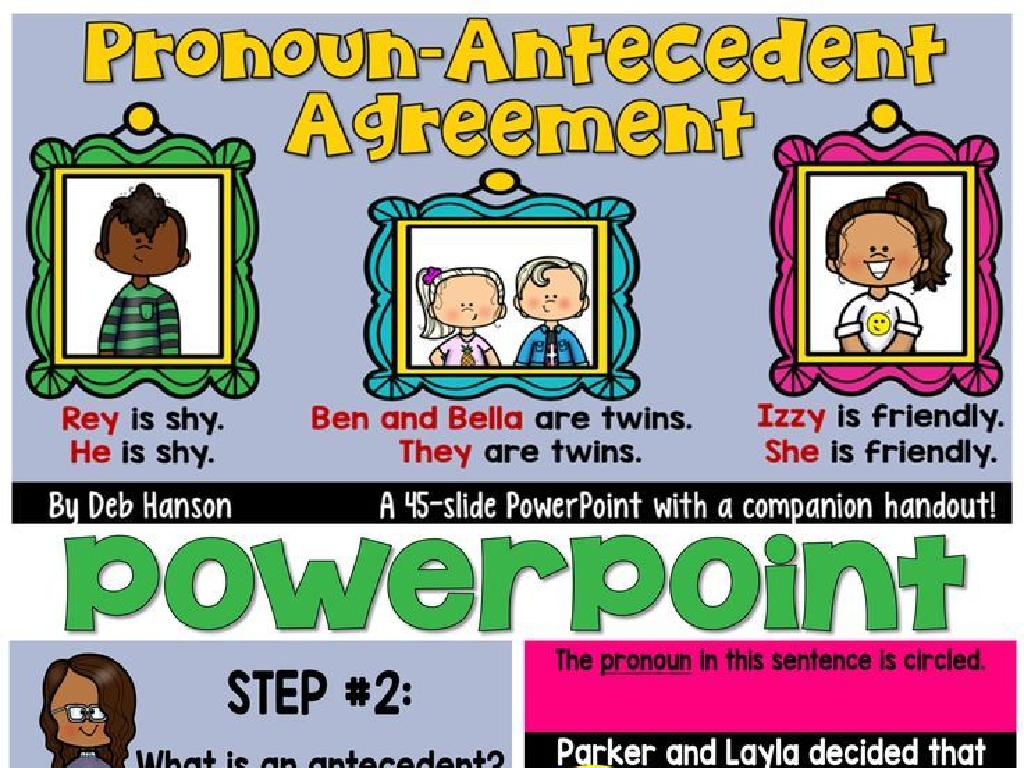Count Atoms And Molecules In Chemical Reactions
Subject: Science
Grade: Seventh grade
Topic: Chemical Reactions
Please LOG IN to download the presentation. Access is available to registered users only.
View More Content
Introduction to Chemical Reactions
– Basics of chemical reactions
– A process where substances change to create new ones.
– Substances’ interaction in reactions
– Reactants transform into products with different properties.
– Chemical reactions in daily life
– Baking a cake, rusting iron, and digesting food.
– Counting atoms and molecules
– Learn to tally up atoms and molecules involved in reactions.
|
This slide introduces students to the concept of chemical reactions, which are fundamental processes in chemistry where substances, known as reactants, undergo a transformation to form new substances, called products. Emphasize that these reactions are not just laboratory curiosities but occur all around us in everyday life, such as in cooking, corrosion, and even within our own bodies. Encourage students to think of more examples they encounter daily. The slide also sets the stage for learning how to count atoms and molecules in these reactions, a key skill in understanding the conservation of mass and stoichiometry in chemistry. Provide clear examples and practice opportunities for students to become comfortable with this concept.
Atoms and Molecules in Chemical Reactions
– Atoms: Matter’s building blocks
– Smallest units of elements, e.g., Hydrogen (H)
– Molecules: Bonds of atoms
– Groups of atoms bonded together, e.g., Water (H2O)
– Common atoms: H, O, C, N
– Hydrogen (H), Oxygen (O), Carbon (C), Nitrogen (N)
– Common molecules: H2O, CO2, O2
– Water (H2O), Carbon Dioxide (CO2), Oxygen (O2)
|
This slide introduces the basic concepts of atoms and molecules, which are fundamental to understanding chemical reactions. Atoms are the smallest units of matter that retain the properties of an element, such as Hydrogen or Oxygen. Molecules are formed when two or more atoms join together through chemical bonds, like water molecules made up of two Hydrogen atoms and one Oxygen atom. Provide examples of common atoms and molecules to help students visualize and relate to everyday substances. Encourage students to think of other common molecules and how atoms combine in different ratios to form them. This understanding is crucial for the next step, which is counting atoms and molecules in chemical reactions.
Balancing Chemical Equations
– Importance of balancing equations
– Ensures atoms are conserved in reactions
– Law of Conservation of Mass
– Matter is neither created nor destroyed
– Identifying reactants
– Substances that start the reaction
– Identifying products
– Substances formed from the reaction
|
This slide introduces the concept of balancing chemical equations, which is crucial for students to understand the principle of matter conservation in chemical reactions. Start by explaining why equations must be balanced: to reflect the Law of Conservation of Mass, which states that matter cannot be created or destroyed in a closed system. Then, guide students to identify reactants (the starting substances in a chemical reaction) and products (the substances formed as a result of the reaction). Emphasize that the number of atoms of each element must be the same on both sides of the equation to be balanced. Provide examples of simple equations and work through the process of balancing them, ensuring students grasp the concept of maintaining equal numbers of atoms for each element involved in the reaction.
Counting Atoms in Chemical Reactions
– Counting atoms in reactants/products
– Tally each type of atom on both sides of the equation.
– Using coefficients to balance atoms
– Coefficients indicate the number of molecules, affecting atom count.
– Practice with a simple equation
– H2 + O2 -> H2O. How many of each atom are there before/after?
|
This slide introduces the concept of counting atoms within chemical reactions, a fundamental skill in understanding chemical equations. Students will learn to identify and count the number of atoms in both reactants and products. Emphasize the importance of balancing equations by adjusting coefficients, which represent the number of molecules or moles in a chemical reaction. The practice example should be worked through step-by-step, showing how to count and balance each atom type to satisfy the Law of Conservation of Mass. Encourage students to practice with additional equations as homework.
Counting Atoms & Molecules in Reactions
– Atoms vs. Molecules counting
– Atoms are single elements, molecules are two or more atoms bonded together.
– Explore Avogadro’s number
– Avogadro’s number, 6.022 x 10^23, represents a mole, a key unit in chemistry.
– Molecular equation example
– H2 + O2 -> H2O. Count the atoms of each element before and after the reaction.
– Practice with a class activity
|
This slide introduces the concept of counting atoms and molecules within chemical reactions. Start by explaining the difference between atoms (single elements) and molecules (combinations of atoms). Introduce Avogadro’s number as a cornerstone of chemistry, representing the number of units in one mole of any substance. Provide a simple molecular equation as an example, such as the formation of water from hydrogen and oxygen, and guide students through counting the atoms involved. Conclude with a class activity where students practice counting atoms and molecules in various chemical equations, reinforcing their understanding of the conservation of mass in reactions.
Complex Chemical Equations
– Counting atoms in complex reactions
– Each molecule has a set number of atoms. Count them in reactions like C6H12O6 + O2 CO2 + H2O.
– Steps to balance complex equations
– Start with elements that appear once, balance them, and proceed to the next.
– Group activity: Tackle a complex equation
– Work together to balance C6H12O6 + O2 CO2 + H2O. Share strategies and solutions.
– Importance of equation balancing
|
This slide introduces students to the concept of counting atoms in more complex chemical reactions and the importance of balancing equations. Begin by explaining that even in complex reactions, the law of conservation of mass applies, and atoms must be counted and balanced on both sides of the equation. Demonstrate a step-by-step approach to balancing equations, starting with elements that appear only once on each side. For the class activity, divide students into groups and assign them the task of balancing the equation for the combustion of glucose (C6H12O6 + O2 CO2 + H2O). Provide guidance on how to approach the problem and encourage collaboration. After the activity, discuss different strategies that groups used to find the solution. This hands-on experience reinforces their understanding of chemical reactions and the conservation of mass.
Class Activity: Balancing Act
– Divide into groups for a worksheet activity
– Each group balances chemical equations
– Present balanced equations to the class
– Explain the process of balancing
– Discuss steps taken to balance equations, such as counting atoms and applying the law of conservation of mass.
|
This interactive class activity is designed to help students understand the concept of balancing chemical equations. By working in small groups, students will engage with balancing equation worksheets that challenge them to apply their knowledge of the law of conservation of mass and the stoichiometry of chemical reactions. Each group will tackle a set of chemical equations, ensuring that the number of atoms for each element is equal on both sides of the equation. After completing the activity, groups will present their balanced equations to the class, explaining the rationale and process behind their work. For the teacher: Prepare diverse sets of equations to cater to different skill levels within the class. Encourage collaboration and peer teaching. As a follow-up, discuss common challenges and address any misconceptions. Possible variations of the activity could include using an online simulation for balancing equations, creating a competition with a scoring system, or having students create their own chemical equations to balance.

